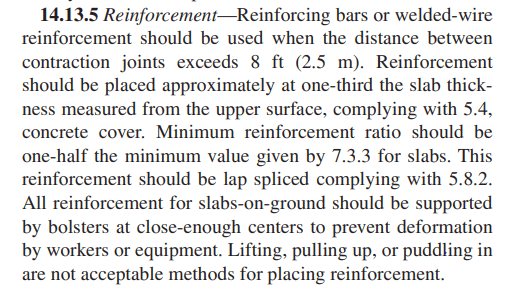Curious on this, I've got 3rd party review telling me my slab-on-grade design is under-reinforced. It's a simple SOG for a shop, no racking or special loading considerations. Basically just pickup trucks and materials. I've applied subgrade drag method for crack control only, and IMO the reinforcement is already over-designed (partially because the client is very cautious). However, they've got other engineering involvement for other portions of the work, and happened to comment that the slab does not meet minimums required by A23.3 7.8.1.
IMO it is unnecessary, and additional cost isn't worth it, but they're paying for it, so ultimately I don't care if it's over designed. But the standard is a bit ambiguous in this regard, and I do like certainty, so curious if anyone else has better information or an explicit definition or guidance based on CSA A23 that I could reference.
Thanks!
joe
IMO it is unnecessary, and additional cost isn't worth it, but they're paying for it, so ultimately I don't care if it's over designed. But the standard is a bit ambiguous in this regard, and I do like certainty, so curious if anyone else has better information or an explicit definition or guidance based on CSA A23 that I could reference.
Thanks!
joe

